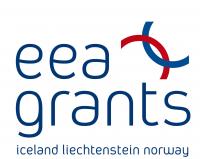Enhancement of the research infrastructure for individualised therapy of chronically sick children
| INTRODUCTION | ABOUT THE PROJECT | CHRONICALLY SICK CHILD | INDIVIDUALIZATION OF THERAPY | PROJECT OUTPUTS |
| DURING THE PROJECT | ABOUT THE LABORATORY | PUBLICITY | PHOTOGALLERY | REFERENCES |
CHRONICALLY SICK CHILD
In recent decades the number of chronically sick children has grown, namely, those suffering from cancers, allergies and auto-immune diseases. The incidence of such diseases has been growing. For example, the incidence of inflammatory bowel diseases (IBD) was 0.3/100,000 in the 1970s. Current epidemiological data shows an increase to 0.7 – 4.3 per 100,000. Leukaemia represents 34% of all child cancer, with the incidence of the latter at 12/100,000 children. About 3% of the child population suffers from auto-immune diseases; as many as 8% from allergic bronchial asthma.
New questions pertaining to strategy arise in connection with long-term aggressive treatment of chronically diseased children – development of the child’s body must be taken into account. Experience from administering medicines to adult patients cannot be simply extended to children. For ethical reasons, only a limited number of preclinical pharmacokinetic studies on the child population have been carried out. One of the significant differences between children’s and adults’ pharmacokinetic and pharmacodynamic aspects is the developing immune system and the changing ability to metabolise foreign substances, including medicines. For example, the immunopathologic response and diseases caused by it in children have a different course than those in adults. That is why the response to treatment, as well as its results, is different even in children of the same age.
The younger the child, the more intense growth and development and, depending on how different is his reaction to medication. In comparison with the adult population, the intensity of metabolism is higher in children. Another phenomenon is the gradual “maturing” of the enzyme systems of the drug metabolism. Not only must the weight of the patient be reflected, but also the functions and capacities of children’s organs at the specific age.
It is a well-known fact that individual sensitivity to drugs is much higher in children. Such differences may be caused by resistance or higher susceptibility to the medicine administered. This is specifically true of substances whose therapeutic range is small and toxic level can be achieved easily. For all the above-mentioned reasons, the strategy and tactics of the treatment must be adapted to the children’s age.
Prednisone, azathioprine, cyclosporine, methotrexate, and warfarin are medicines with a wide portfolio of significantly adverse effects. Dosages of such medicines for a particular patient are based on empirical experience and are governed by the clinical process of the disease and monitoring the indirect aspects of the inflammation response and monitoring of possible adverse effects. Bio-transformation enzymes and transporters decisively affect the response to a drug, thus speeding up or extending the process of its elimination. Polymorphism of the genes which encode enzymes for metabolising the medicines, transporters and receptors is the cause of the tremendous differences in the pharmacological effects on individual patients. Their expression and activity level in children have not been systematically studied to date. Hence, the study of polymorphisms, phenotype and genotype classification, should help us to optimise medicine dosage for an individual patient – a “tailored” treatment.
In order to be able to choose a proper dose, the level of medication in the body must be known. The drug level within tissue is a result of the pharmacokinetic properties, which in their turn mainly reflect the individual pharmacogenetics – i.e. the genetically determined ability of the body to transport, effectively bind and metabolise medicines. For the above-mentioned reasons, our project will be focused on enhancement of the research infrastructure for the study of phenotype and genotype classification, as well as transcription and proteomic changes in chronic diseases of children, with different manifestation of the symptoms and a dynamic response to the treatment. The originality of the approach taken in such projects rests in studying the entire range of the relevant mechanisms, from the level of genes, enzyme activity, target cell populations, and the body’s response, as well as assessment of the clinical effects, all of which are related to the child’s age.
Supported by grant from Island, Lichtenstein a Norway in the frame of Financial mechanism EHP.




